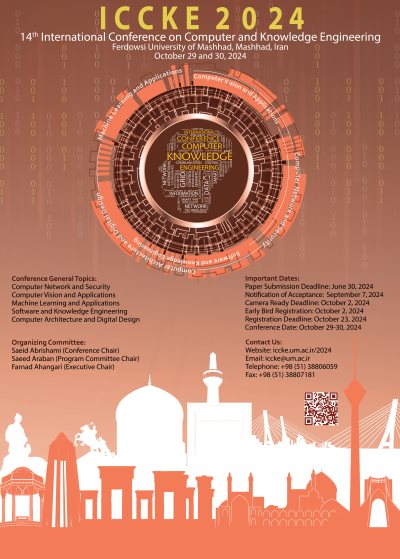0% Complete

Authors :
Keywords :
Abstract :
List of archived papers
Mohammad Mehdi Samimi - Alireza Basiri
Marzieh Naghdi Dorabati - Reza Ramezani - Mohammad Ali Nematbakhsh
Reyhaneh Ilaghi - Raheleh Ilaghi - Fereshteh Rahmani - Seyyed hamid Ghafoori
Seyedeh Somayeh Fatemi Nasab - Davoud Bahrepour - Seyed Reza Kamel Tabbakh
Negin Shafinezhad - Hamidreza Abrishami - Saeid Abrishami
Mahdi Nangir - Abdolrasoul Sakhaei Gharagezlou - Nima Imani
Seyed Aref Hakimzadeh - Koorush Ziarati
Mohammad Reza Kardoost - Mohammad Reza Moosavi - Reza Akbari
Mohammad Hajizadeh - Adel Rahmani - Mohammad Sabokrou




